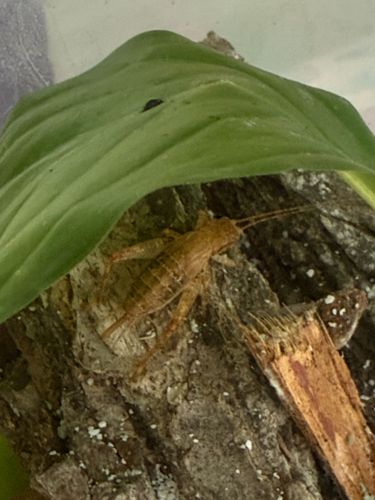Camel Cricket or Cave Cricket
Scientific Name: Various genera within Rhaphidophoridae, e.g., Ceuthophilus, Tachycines
Order & Family: Order Orthoptera, Family Rhaphidophoridae
Size: Typically 1 to 5 cm (0.4 to 2 inches) in body length, with very long antennae and legs.

Natural Habitat
Damp, dark, and secluded environments such as caves, hollow logs, under rocks, basements, crawl spaces, and sheds. They thrive in environments with high humidity.
Diet & Feeding
Omnivorous, feeding on organic matter, decaying wood, fungi, plants, and even other small insects. They are opportunistic scavengers.
Behavior Patterns
Camel crickets are typically nocturnal and highly elusive, known for their strong jumping ability when startled. They do not chirp like true crickets because males lack stridulatory organs. They prefer damp, dark environments.
Risks & Benefits
Generally harmless to humans. They are not known to bite or carry diseases. However, large infestations indoors can be considered a nuisance, and they may chew on fabrics, wood, or plants if other food sources are scarce. Ecologically, they serve as scavengers and a food source for other animals.
Identified on: 8/22/2025